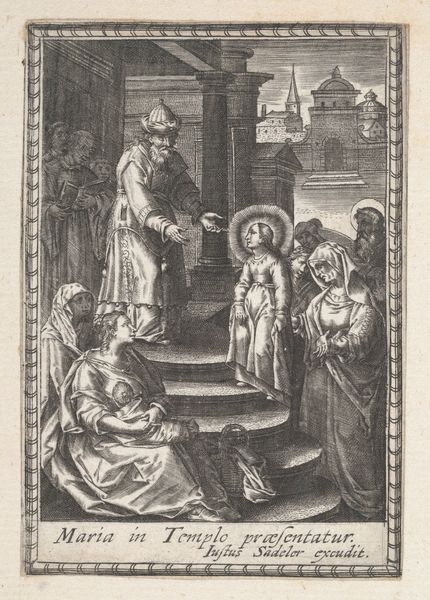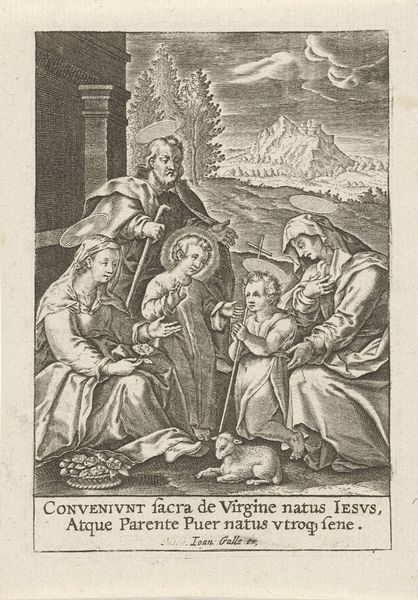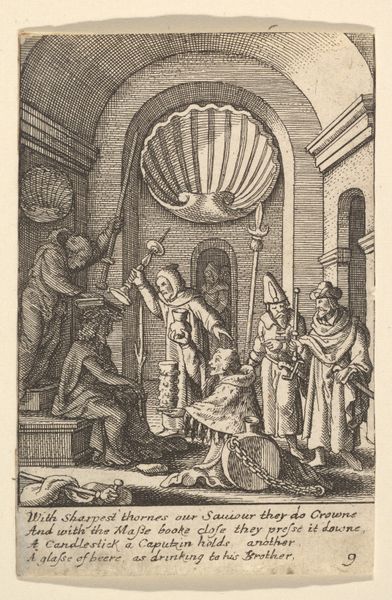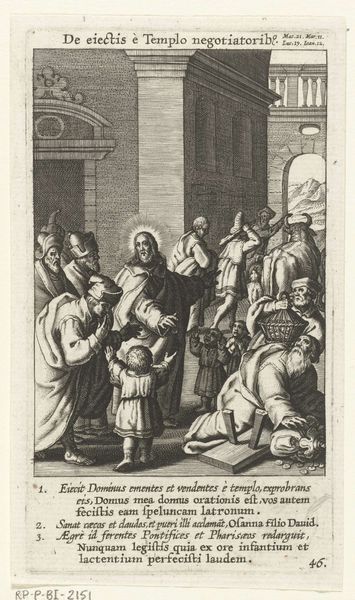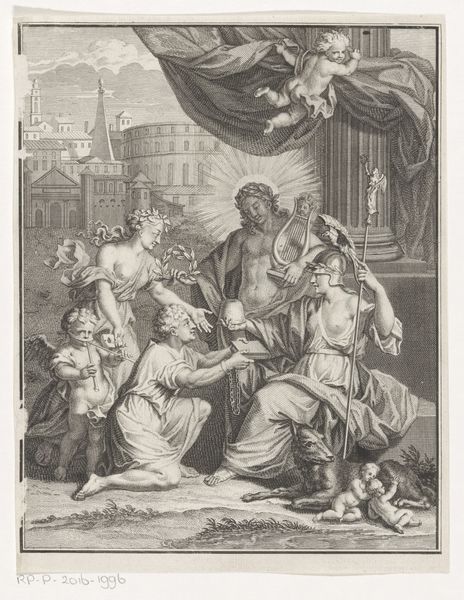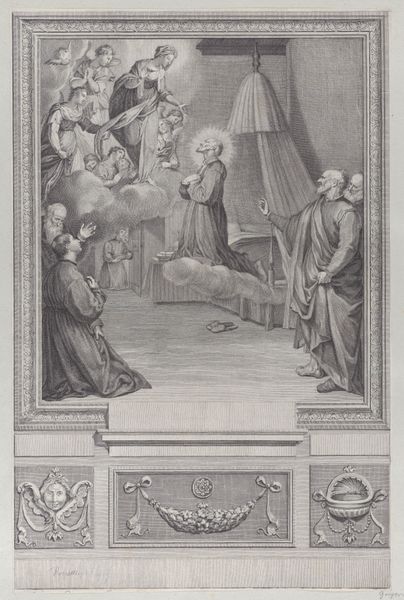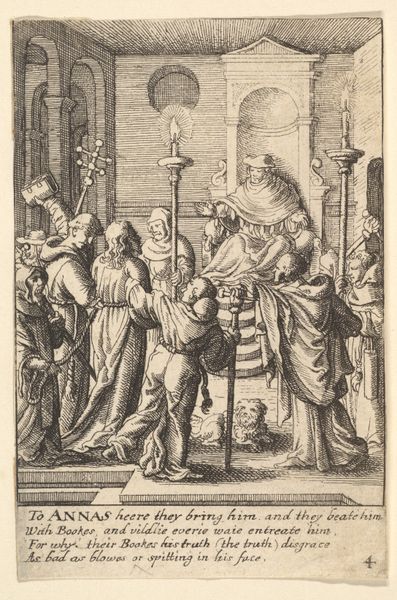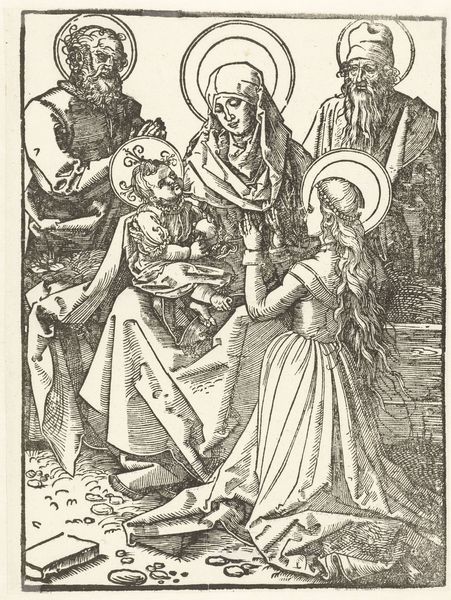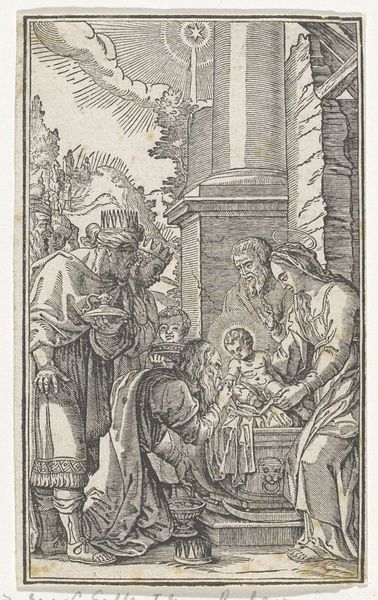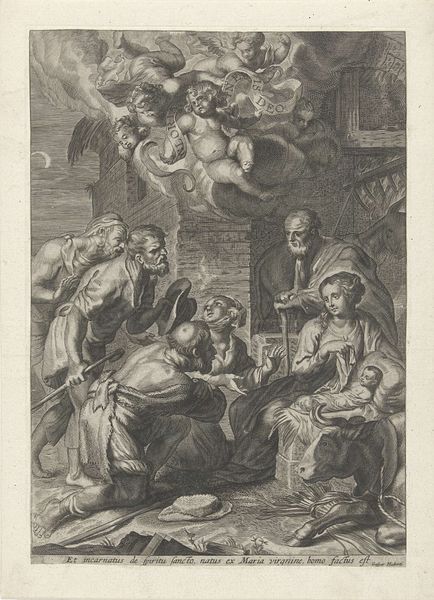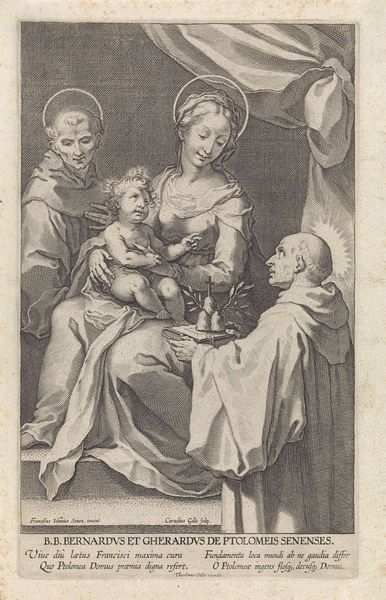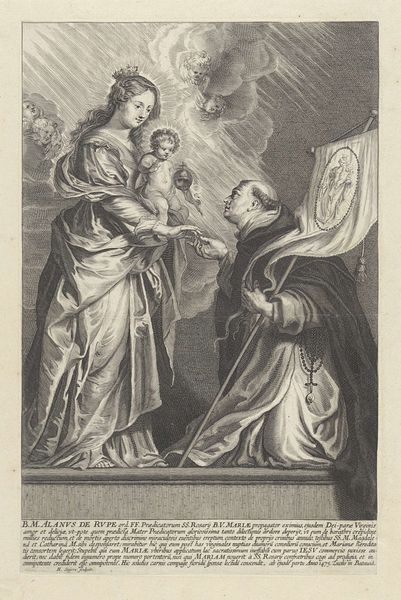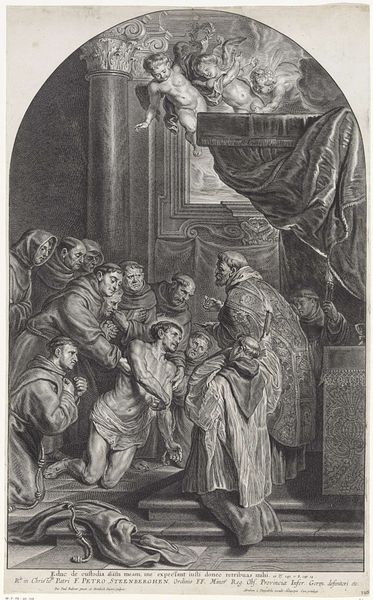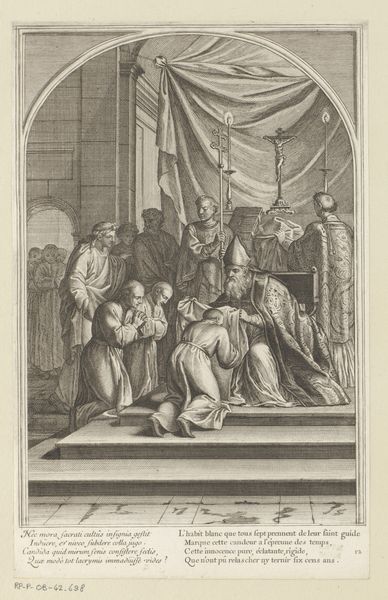
drawing, print, engraving
#
drawing
#
allegory
#
baroque
# print
#
old engraving style
#
figuration
#
history-painting
#
engraving
Dimensions: Sheet: 3 3/8 × 2 5/16 in. (8.6 × 5.8 cm)
Copyright: Public Domain
Curator: The stark contrast in this engraving of the Adoration immediately grabs you, doesn’t it? It feels so dramatically Baroque. Editor: Absolutely. The high contrast pulls your focus right to the figures. There's a tension between the static central grouping and the procession fading into the background, a movement towards or away from…something significant. Curator: It’s labeled "Trium Regum oblatio" below, which explains the central subject. And this print, currently residing at the Met, was created anonymously sometime between 1590 and 1625. The symbolic power within it resonates strongly, doesn’t it? Consider the star. Editor: Right, the star is crucial. It doesn't just guide; it signifies destiny, marking the intersection of the divine and mortal realms. But note who’s doing the offering, and their presumed ethnicities. Curator: Yes, each Magus represents different continents then known to Europe, a world come to worship and pay tribute. Look at their gifts too – gold, frankincense, myrrh. The symbolism there is profound, tied to kingship, divinity, and mortality. And Saint Joseph there, a constant symbol of silent guardianship. Editor: But is that “homage” an endorsement of religious and worldly power, implicitly justifying hierarchy? Or a sincere moment of cultural exchange, with the orient bringing knowledge to the Occident, upending established norms? That contrast creates a critical conversation. What truths are being obscured by these established symbols? Curator: You pose a good question, and that tension—the weight of tradition versus potential reinterpretation—is one reason this image, centuries later, retains its symbolic potency. And still stimulates critical discourse, like the one we're having right now! Editor: Yes, because this old print, for all its historical weight, still reflects how narratives are shaped, and who gets to shape them. Analyzing this visual text, as dated as it may appear, remains urgently relevant.
Comments
No comments
Be the first to comment and join the conversation on the ultimate creative platform.
